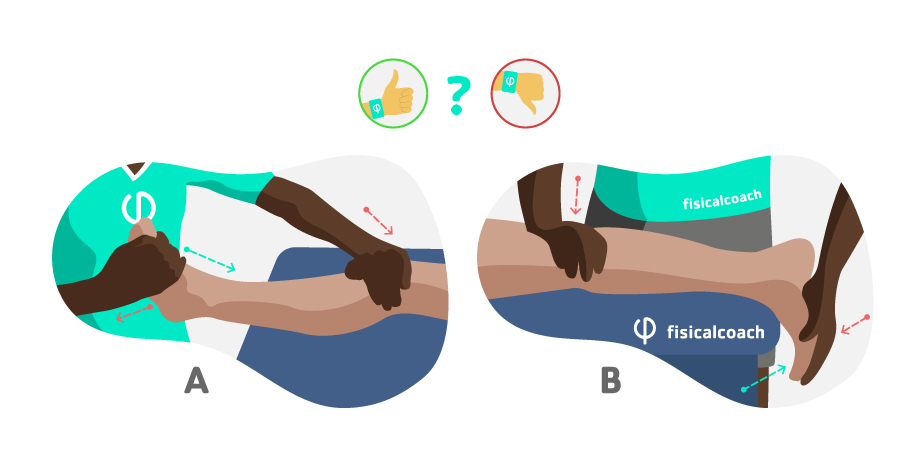
Gastrocnemius test
This test is used to actively assess the muscle balance of the gastrocnemius muscle.
- Required material: A physiotherapy couch and a hand-held dynamometer. With the support of an assistant, a goniometer could be used.
- Procedure:
- A) Test for the exploration of dorsal flexion: the subject is placed lying supine (face up) and the evaluator takes a shot at the level of the knee and another at the level of the dorsal side of the forefoot (Illustration A).
- B) Test for the exploration of plantar flexion: The subject lies in prone position (face down) and the assessor takes one measurement at the knee and another at the level of the plantar aspect of the ankle to be assessed (Illustration B).
In both tests, the subject must perform the maximum force that can be developed. Both sides must be assessed.
- Assessment: The test is considered abnormal or positive if the subject is unable to separate the hand from the back. On the other hand, if the subject is able to separate the hand from the back the test is considered normal or negative.
- Remarks: The separation of the hand from the back in subjects with limited internal rotation of the shoulder should be assessed with caution, as there may be a subscapularis lesion and be able to separate the hand from the back by performing elbow extension by a triceps muscle action. In addition, the latissimus dorsi muscle may mask possible subscapularis injuries by acting as an internal rotator.
Haz este test y 139 más en nuestra App